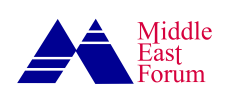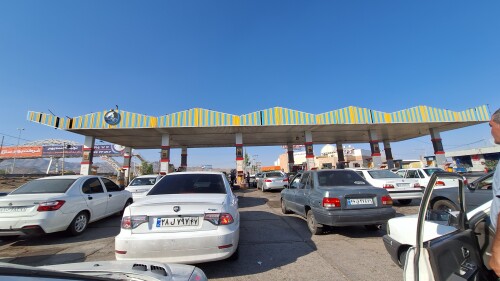Many people in Iran were optimistic and even supportive of Israel when it first began conducting targeted strikes against the Iranian regime’s nuclear facilities, scientists and senior military commanders, not least from the Islamic Revolutionary Guards last Friday. This was hardly surprising: the same military commanders and Revolutionary Guards have, over the past four decades, been responsible for murdering thousands of Iranians civilians each time they’ve taken to the streets against the regime.
The current goal of the Islamic Republic’s regime is to evoke fear and panic amongst the Iranian population to make them believe that they are in fact Israel’s targets.
But as the war now expands across Iran’s cities and residential areas, the regime’s propaganda machine is going into overdrive in an attempt to convince the population that Israel is indiscriminately targeting Iranian civilians, not the regime. While this is unlikely to result in the population rallying around the regime, as more explosions are heard across residential areas, it could see an about-face in public opinion, against Israel. If left unaddressed, Israel risks losing the hearts and minds of Iran’s population – a population that, until now, is perhaps the most pro-Israel in the region. The current goal of the Islamic Republic’s regime is to evoke fear and panic amongst the Iranian population to make them believe that they are in fact Israel’s targets.
Based on our own conversations with people in Tehran since the war began, it seems that sentiment among the population is increasingly evolving into a combination of skepticism and panic. But it’s not too late to prevent this from happening.
To remedy this situation, Israel needs to explicitly and continuously draw a distinction between Iranians and the Islamic Republic, both in its communications and military strategies. It should undermine and strike the latter with full military force, tackling its ideological and propaganda apparatus, which is perhaps the most important cog in the regime’s machine. Its critical infrastructure can be broken down into three key categories: military-security; ideological-propaganda; and political.
When it comes to the Islamic Republic’s military-security infrastructure, high on Israel’s target bank should be the Sarallah Headquarters and its regional Revolutionary Guard-Basij regional bases in Tehran. Sarallah Headquarters is the most critical IRGC body responsible for maintaining security in Tehran, protecting key government buildings and infrastructure, and responding to threats against the capital. It plays a central role in decision-making aimed at preserving the regime’s political order and suppressing dissent among the Iranian population.
Another target would be dismantling the police special forces which has detained, tortured and killed thousands of Iranian protestors throughout the past three decades. Rest assured, eliminating these organs that have been at the forefront of spilling Iranian blood on the streets would be hugely welcomed.
Across the ideological-propaganda domain, Israel should target the Revolutionary Guards’ cyber and propaganda machinery – including its Baqiatallah Headquarters which shares the same special status as the Quds Force – as we exposed last year. The Baqiatallah Headquarters is the most important body in coordinating, producing and spearheading Revolutionary Guards’ propaganda. Under its command, a cyber-campaign to dehumanize Israeli civilians and Jews to justify attacks against them has been conducted. For example, it has consistently stated that there are “no civilians in Israel” so every person is a “legitimate” target. Other examples, include a Revolutionary Guards-affiliated TV channel, which has been airing messaging that the Revolutionary Guards will “uproot all Jews.”
Across the ideological-propaganda domain, Israel should target the Revolutionary Guards’ cyber and propaganda machinery – including its Baqiatallah Headquarters which shares the same special status as the Quds Force.
Other key ideological entities that should be high on the Israel’s list should include the Islamic Propaganda Organization, the nucleus of the regime’s antisemitic and Islamist extremist propaganda machinery, both inside and outside of the country. Just yesterday, the Islamic Propaganda Organization held anti-Israeli marches in Iran to mobilize support for the regime’s attacks on Israel; and in the past it has published antisemitic books, such the notorious “The Protocols of the Elders of Zion.”
Israel should further continue to undermine and strike the regime’s broader conventional propaganda apparatus, such as the Islamic Republic of Iran Broadcasting, which Israel struck during a live broadcast on Monday. The regime’s propaganda efforts sought to spin this as an attack on civilians, but many on Iranian social media welcomed the strike on the channel which is part of the suppressive and propaganda machinery for more than four decades. The targeting of Iran’s state TV could have been accompanied with footage of how its staff interrogating and participating in the torture of Iranian dissidents.
In terms of the political sphere, as well as those involved, Israel should focus on eliminating those who have been involved in gross human rights violations, not least the interior ministry and the judiciary. Of course, the most important political target, cutting across all of the regime’s key infrastructure, is the supreme leader and his extensive office. Eliminating Islamic Republic Supreme Leader Ayatollah Ali Khamenei would trigger the biggest popularity boost for Israel. This could open a space for total and rapid regime collapse.
All of the above should take place within the framework of a clear Israeli public diplomacy strategy that engages the Iranian people directly and dismantles the regime’s propaganda narrative piece by piece. Since the start of this war, the Islamist regime has attempted a shift from referring to “the Islamic Republic’s” armed forces as “Iran’s” armed forces – a nationalist strategy that has largely been left unused since 1979. This shift, alongside the airing of Iranian nationalist symbols, are a desperate attempt to manipulate the Iranian people and convince them this is war against Iran, not the Islamic Republic.
Israel should now expand its operations and show it is seeking justice for the common Iranian toward liberation from the tyrannical Islamist regime.
The Israeli army’s Farsi-language outreach team has done a good job in communicating with Iranians thus far, for example by evoking inspiring ancient legends in Persian mythology about the collapse of tyranny in Iran, such as the story of Kaveh versus Zahak the Tyrant, who repressed the Iranian people and murdered Iranian youth. While foreign audiences may struggle to grasp the importance of such stories, these narratives, which describe Khamenei as Zahak and Israel as helping the Iranians defeat him, can catalyze a significant psychological boost for Iranians, critical to inspiring a popular uprising against the regime.
Israel should now expand its operations and show it is seeking justice for the common Iranian toward liberation from the tyrannical Islamist regime. This narrative could be strategically and powerfully framed as “returning the favor” 2,500 years later—repaying the Iranian people for Cyrus the Great’s liberation of the Jewish people from Babylonian tyranny and his support in helping them return to their homeland. In addition to this, as part of its Farsi communication strategy, Israel should make explicit links between each regime target and its inflicted repression in Iran or terrorist activities in the region.
Israel has already won over Iran’s airspace, but it should not forget the hearts and minds of the Iranian people. They will be crucial to winning the war against a joint enemy: the tyrannical Islamic Republic regime.
Published originally on June 19, 2025, under the title “Here’s How Israel Can Take Down the Islamic Republic of Iran.”
Text differs slightly from the original.







